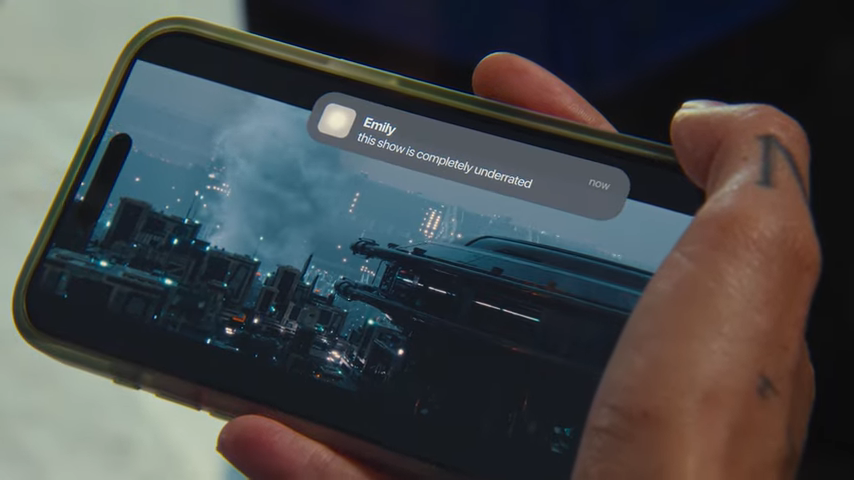
One of the hottest new trends in tech is turning into a necklace guy. Mark Zuckerberg has gone all out on showcasing his necklace love of late — he's like the Flava Flav of Silicon Valley.
But what happens when two of tech's biggest trends collide? Well, you get AI necklaces like the Limitless Pendant, which is a productivity-focused device that captures your day through transcription and dictaphone-like services.
On the other hand, you get something like the recently announced Friend — which, as the name implies, is all about companionship and bringing it to you in the most jilted and disorganized way possible. Just like a real friend.
Friend. (Not imaginary)
Friend is a new AI wearable from the mind of Avi Schiffmann, a web developer who gained fame in 2020 for building a website that helped to track the spread of COVID-19.
Since then, Schiffmann has switched his focus to converting our AI digital assistants into digital companions — 'friends' that we carry with us throughout our days, always listening and free to reach out as and when it pleases to provide a more authentic experience of interacting with another and effectively combating loneliness.
The result is Friend, a $99 AI wearable pendant (or friendant, if you will), that acts not as the copilot to your computing experiences, but as one for your real life. "Not imaginary" is the tagline of this product, though admittedly, while an actual thing, your friendship with it likely will be.
In reality, you'll be just as friendless, though now sat in a corner somewhere talking to your magical neck chain. Which if anybody wasn't aware, doesn't showcase you to others are potential friend material.
However, suspension of disbelief is a powerful thing, and I won't deny the potential of software like this to provide relief from loneliness or a measure of comfort for those more insular, shy, or reserved in nature — regardless of how much this seems like viral marketing for an upcoming series of Charlie Brooker's Black Mirror.
Why isn't it an app?
If there's a lesson to be learned from the recent wave of AI wearables and pocket devices that have flopped, it would be this: Why isn't it an app?
Reflecting on the Rabbit r1, this well-marketed pocket-sized AI assistant, with its Nothing-adjacent Teenage Engineering design, caught major attention on its reveal. However, not long after its release, it was revealed that the r1 was basically an Android app in a fancy plastic shell.
In the case of the r1, at least it provided an all-in-one experience. Many AI wearables still require access to your smartphone to interact with a proprietary app. Friend is no different.
The pendant around your neck acts like an always-listening, space-age, walkie-talkie for voice capture, leaving your phone to do the heavy lifting. With no built-in speaker, every time you talk with your friend you will need to bring out your phone to check for a reply. Which defeats the purpose of having an external device in the first place.

From everything seen so far, the Friend is a great big Siri button/microphone that diverts from Apple's digital assistant to a somewhat more conversational option instead. So why isn't it an app?
Well, that's likely due to counteracting Apple's pesky privacy-first approach, with the pendant the easiest way to allow the Friend to always be listening for an opportunity to respond.
While the creator claims that audio and transcripts aren't sored past the device's context window and that all data is end-to-end encrypted, it's unlikely that an app would be able to secure the right amount of privileges to make Friend's always on, always listening, always available state a reality.
But wait, there's potential here
Before I dismiss the Friend out of hand, as creepy as its video reveal might have been, there is potential in a device like this. Just, maybe not for watching trailers with you or being a hiking companion.
A device like Friend, if it could potentially avoid its reliance on smart phones as an intermediary, would make a great companion for the elderly (to be fair, it does already strongly resemble a personal alarm necklace for the aged), those with ability impairments, or even those with mental ill-health like depressive disorders or anxiety.
Having a believable companion to hand who is always listening and willing to interject or reach out as it feels is actually a rather beneficial application of this wearable. Though its marketing seems to be swaying leaning into the friendant being an irreplaceable life companion with vaguely awkward undertones.
Still, how it works in reality is a whole other ball game. There's potential here, but we'll need to wait until the Friend begins shipping in Q1 2025 to find out how much.







